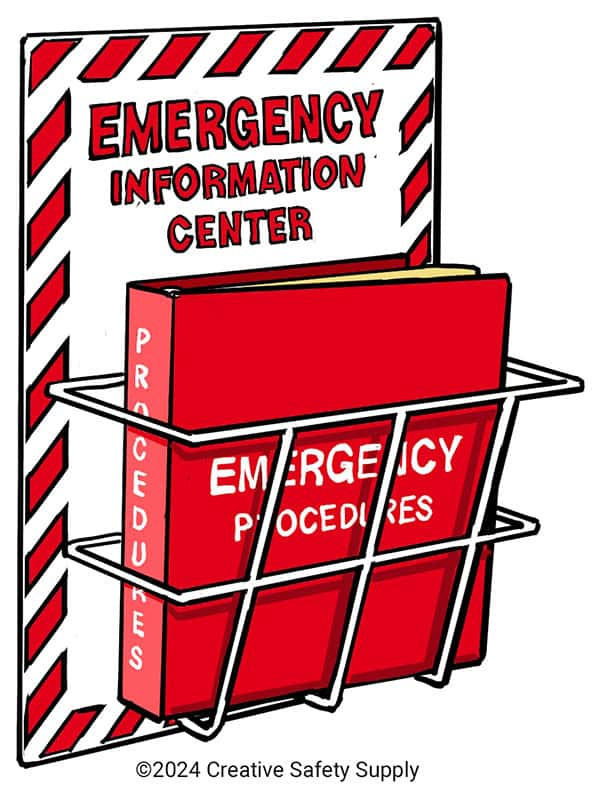
An emergency action plan, or EAP, exists to prepare employees for emergencies ranging from ones originating outside of the building such as natural disaster threats, emergencies within the building such as power outages or fires, and health-related emergencies such as heart attacks or concussions.

Requirements from OSHA
Due to the nature of these dire situations, OSHA has implemented regulations that focus on preparing for these emergencies to minimize injury and maximize employee awareness and knowledge. The minimum requirements that OSHA mandates for an EAP include:
- A means of reporting emergencies to emergency personnel
- Evacuation procedures and emergency escape route assignments
- Procedures for those who must shut down critical plant operation before departing
- Accounting for all employees after an emergency evacuation has been completed
- Rescue and medical duties for employees performing them
- Names and job titles of persons who can be contacted
On top of those minimum requirements, the first step in building an effective emergency action plan involves assembling a team which allows for clear communication from both management and employees. Next, a risk assessment must be performed to find dangers involving equipment, product, the building itself, etc. After these two steps are completed, it is imperative that a written plan be made for the facility, in which there will be performance objectives, training protocols, emergency evacuation routes, and assembly areas.
Once this has all been completed, it is not only required by OSHA for employers to review the plan with employees, but it is also prudent to practice until the procedures have been sufficiently engrained in workers’ memories.
Lastly, an EAP wouldn’t be complete without the ability to alert workers and visitors of an emergency. This is a critical aspect of an emergency action plan because it initiates protocols that employees trained and prepared for in the first place. Alarm and detection technology must be maintained and tested to ensure all in in working order.
By making sure at least the minimum requirements are met for an emergency action plan, employees will have enough information to perform an emergency evacuation with no fatalities and minimal injuries, if any at all. Regardless of the fact that every facility is different, employees have the right to be given sufficient resources to take their safety into their own hands.
Similar Questions
- What should an evacuation plan include?
- What are OSHA requirements for emergency evacuation?
- What is an emergency evacuation plan?
- What are emergency evacuation processes?
- What does EAP stand for?
- What emergency response procedures does OSHA require?
- Do employees need to be trained about emergency egress?
- When does OSHA require an emergency response?
- Are emergency evacuation drills required by OSHA?


